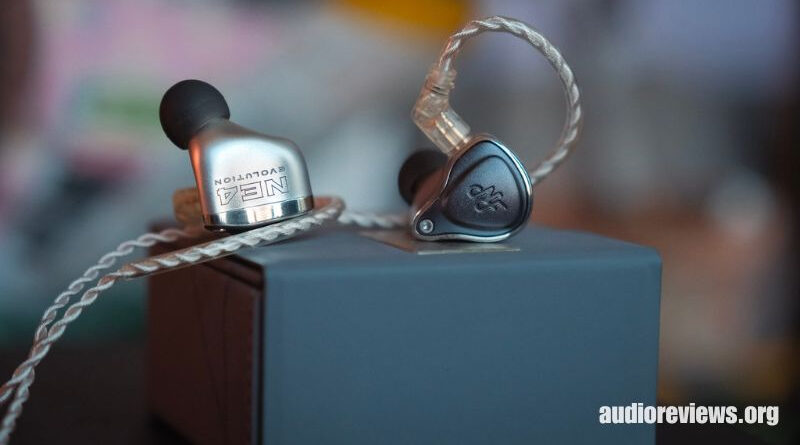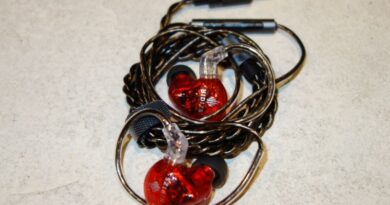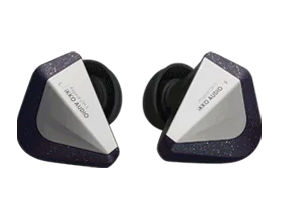NF Acous NE4 Evolution Review – Pick Your Poison
The $749 NE4 Evolution is a hodge-podge of idiosyncrasies starting from the sound signature to ergonomics.
PROS
- Truly flagship level midrange
- Great imaging and soundstage
- Insightful bass
CONS
- The bass quantity depends heavily on the insertion depth
- Only one swappable filter plate approaches neutral sound
- The 4 – 6kHz dip adds a dull coloration with all filters
In this Article
Introduction
I usually steer clear of reviewing IEMs with tuning DIP switches. Why? Because with 4 switches you get 16 minor variations of the same IEM and I don’t have the time to test them all. The NF Acous NE4 Evolution is different. You get 4 swappable faceplates, each of them containing a crossover circuit. Having four different personalities in the same package seems like a sweet deal. Especially for those of us who keep multiple sets of IEMs and headphones around. The question is how many right answers NF Acous can come up with to the age-old question – how IEMs ought to sound?
So let’s get that hex wrench handy and join me as I explore the many faces of the NE4 Evolution!
Specifications
Drivers: Knowles 22955 + 29689 + 31736 (composite) balanced-armature drivers Impedance: 6 ohms (pop faceplate), 10 ohms (reference faceplate), 22 ohms (transparent faceplate), 17 ohms (explore faceplate) Sensitivity: 104dB/mW (pop faceplate), 108dB/mW (reference faceplate), 110dB/mW (transparent faceplate), 110dB/mW (explore faceplate) Frequency Range: 9-20kHz (pop faceplate), 18-22kHz (reference faceplate), 20-30kHz (transparent faceplate), 15-25kHz (explore faceplate) Cable: Silver-plated copper, twist braid, 1.2m Connector: 2pin 0.78 mm, 3.5mm TRS with an optional 6.35mm adaptor Tested at: $749 Purchase Link: Linsoul, Shenzhen Audio, Hifigo |
Physical Things and Usability
| In The Box: IEMs, S/M/L balanced and XS/S/M/L wide-bore tips, 1.2m cable, 3.5mm jack, 6.35mm adaptor, 3 pairs of swappable faceplates and a carrying case. |
| Appearance, Haptic, Build Quality: the all-metal build feels appropriate for the price. |
| Ergonomics: the earshells are not ported, so care has to be taken to insert the IEMs without causing pressure build-up. |
| Comfort, Fit: the earshells fit me well, but are on the large side so small ears need to try them before buying. |
| Isolation: despite having no acoustic port, the isolation is more in line with ported IEMs. |
Build quality
The NF Acous have done a great job making sure that the NE4 feels great both in the hand and in the ear. The housing is made from cast and then milled aluminum. For a four BA design, it is quite large mostly because there’s essentially a false faceplate with spring-loaded terminals that connect to the removable faceplates.
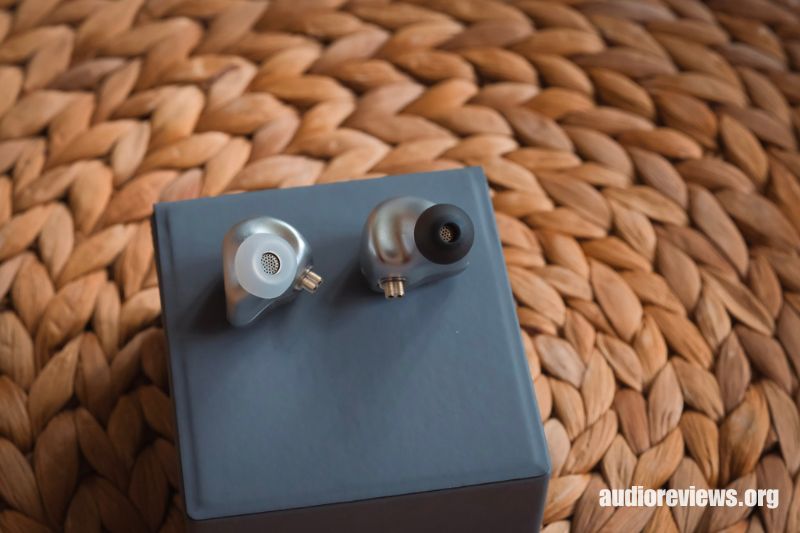
The faceplates themselves fasten to the earshell by a latch and a bolt. The fit doesn’t have to be airtight because the earshell is already sealed. Swapping them out is a breeze with the included hex key driver. The nozzles are a part of the metal earshell and luckily are pretty thin for today’s standards. I like that there’s a retaining lip which prevents the tips from sliding off when things get sweaty and oily.
Eartips
Like the NF Acous NA2+, the NE4 comes with two sets of tips: regular “balanced” silicon and wide-bore, called “atmospheric.” Both are perfectly capable of maintaining a good seal with my ear canal. For most of my listening, I gravitate toward the regular tips because the wide-bores would not stay in my ears and try to slide out. This causes a negative pressure pocket in my ear canal and would displace the eardrum thus causing some sound distortion and discomfort.
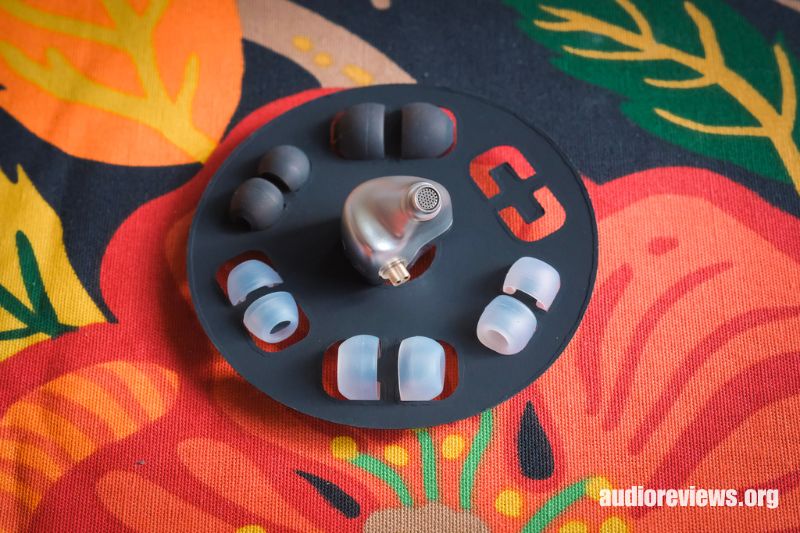
During the testing period, the NE4 gave me an unusual amount of trouble with insertion. First of all, I had to use the old ear-pull method to get a good fit without creating a pressure pocket. The NE4 are fully sealed and just pushing them in doesn’t work. At the same time a deep fit is required to get a good low-end response. BA drivers are notorious for being very sensitive to ear-canal acoustic impedance and a shallow fit will change the low-end giving the stereotypical BA-bass I personally dislike.
Sound quality and signature
Test setup: On the go, I used my Qudelix 5K and FiiO Q15, while desktop use was tested mostly on the FiiO K19 and SMSL SH-X combo. Occasionally Ifi Go Bar Kensei and FiiO KA17 were used.
I’ll preface this section by saying that 99% of my listening was done with the black “reference” filter plate. I tried the two included ones as well as the optional “explore” plate and found the black faceplate to sound the best by far. Therefore my impressions will be from listening that way but at the end, I’ll tell you how the rest of the plates compare.
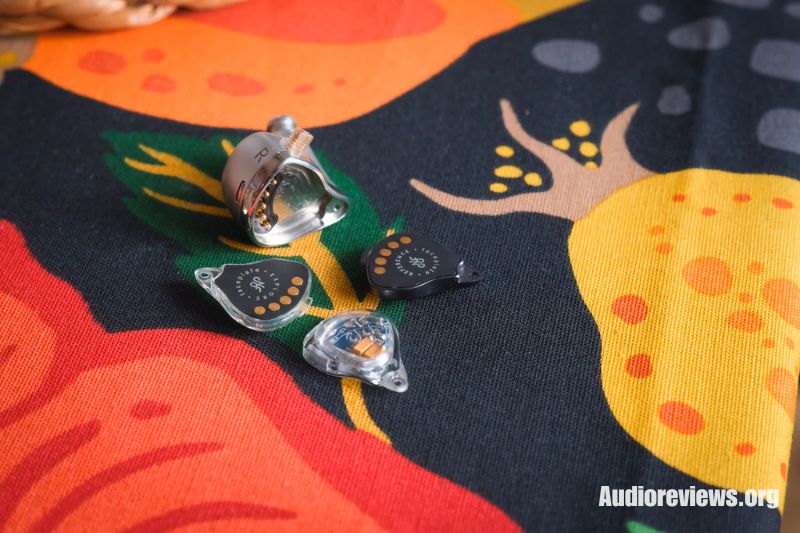
Driving the NF Acous NE4 isn’t hard, all of my dinky dongles managed it. The main challenge lies in the resolving power of the NE4 which is rather high and will show any deficiencies in a source or amplifier. The Qudelix 5K wasn’t unenjoyable but with every step upwards, I found that the NE4 kept up and delivered even more.
The NF Acous NE4’s default tuning is mostly neutral, with emphasis on midbass and midrange. This is a double-edged sword. We do get great resolution across the range right up to upper mids but at 4.5kHz the response drops like a rock only to recover at 6kHz or so. This imbues the sound with a certain dullness and colors the overtones of many instruments. The output in the top octave is there but feels subdued compared to the rest of the range.
Do other filter plates fix this? Not really. The upper-mid deficiency is present in all of them. The red “pop” filter attempts to boost bass at the cost of scooped mids. The “transparent” and “explore” plates closely mimic the “reference” one but with even less low end. I am rather baffled by these tuning choices as they keep the technically capable IEM reaching a wider listener appeal.
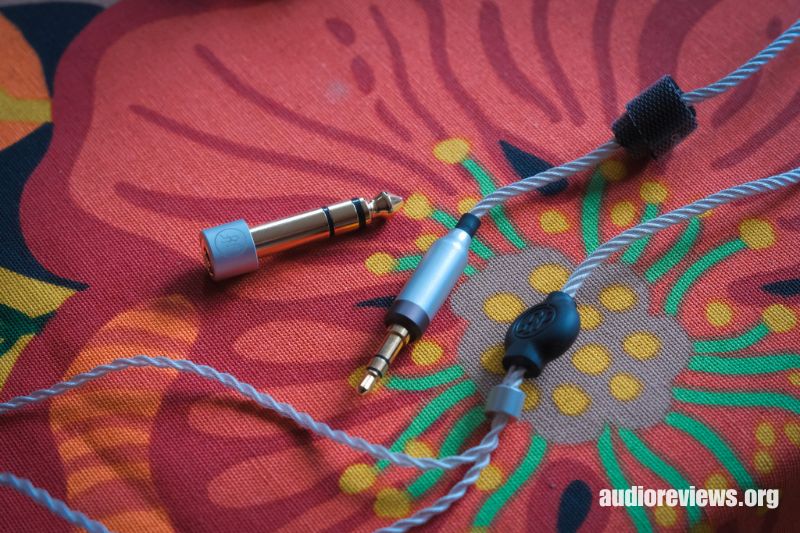
Select comparisons
Tangzu Xuanwu Gate
This tribrid IEM inhabits a similar price category as the NF Acous NE4 Evolution and employs a dynamic driver for the lows and an electret module as a supertweeter. Both IEMs have full metal earshells but the Xuanwu Gate gas a more eye-catching design. It also outclasses the NE4 in terms of accessories – the cable is nicer and it has swappable ends for balanced drive.
Even though I called the Xuanwu Gate “a tad thin-sounding”, they deliver a much more enjoyable sound than the NE4. The tuning is a bit unorthodox, but the NE4 is pure marmite/vegemite in comparison.
Pairing notes
I would go with a DSP-capable or at least a bass-boost-equipped DAC or amp with the NF Acous NE4. The extra low-end helps tremendously even if it doesn’t solve the upper mid dip.
Concluding Remarks
I’m having a hard time recommending the NE4 to anyone other than people who are very certain the 4-6kHz dip won’t bother them. I’ve been known to say that if a piece of audio equipment gets the mids wrong then the rest doesn’t matter. With the NE4 the mids are pretty magical but the rest is okay at best. Maybe NF Acous can work on a new filter faceplate and shoot for a more popular tuning? Now that would be an evolution!
My verdict – 2.5/5
Disclaimer
Thanks to NF Acous for supplying the review sample. As always, they had no say in the review process and didn’t see the review before posting.



